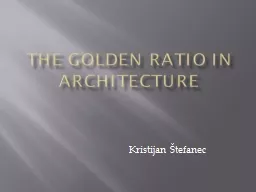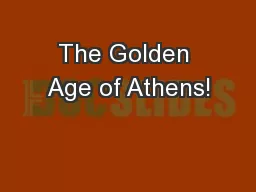PPT-The Golden
Author : cheryl-pisano | Published Date : 2016-04-28
R atio By Rachel Lewis adapted from httpwwwgeomuiucedudemo5337s97bdiscoverhtm Goal Given a ruler and various rectangles found in the classroom students will measure
Presentation Embed Code
Download Presentation
Download Presentation The PPT/PDF document "The Golden" is the property of its rightful owner. Permission is granted to download and print the materials on this website for personal, non-commercial use only, and to display it on your personal computer provided you do not modify the materials and that you retain all copyright notices contained in the materials. By downloading content from our website, you accept the terms of this agreement.
The Golden: Transcript
Download Rules Of Document
"The Golden"The content belongs to its owner. You may download and print it for personal use, without modification, and keep all copyright notices. By downloading, you agree to these terms.
Related Documents














